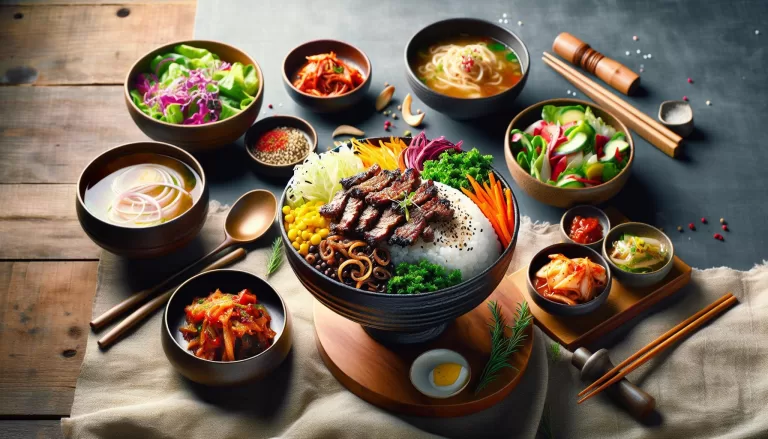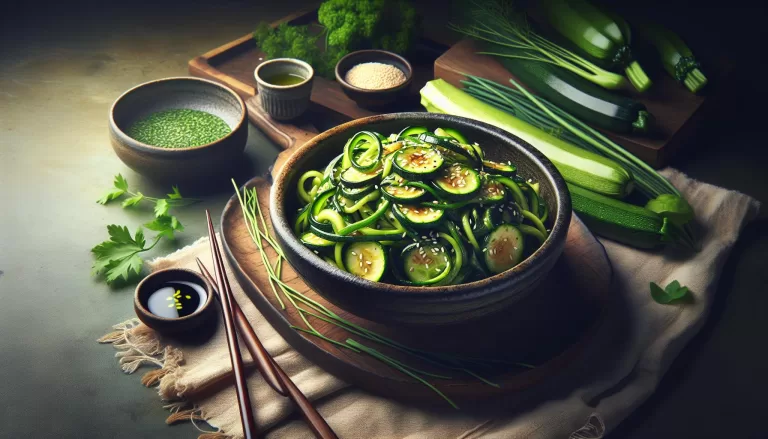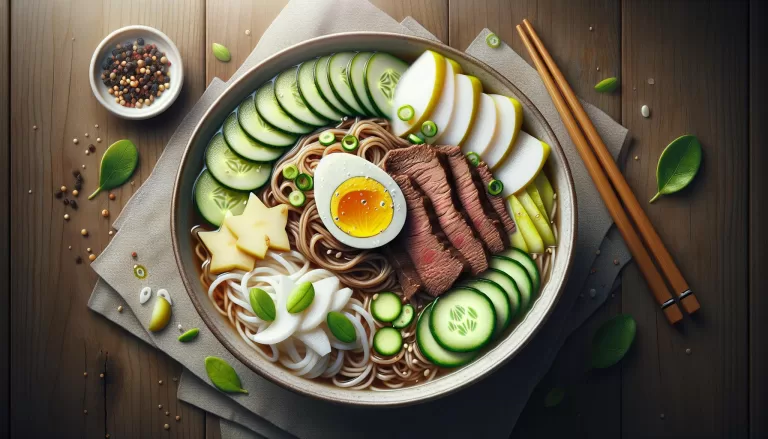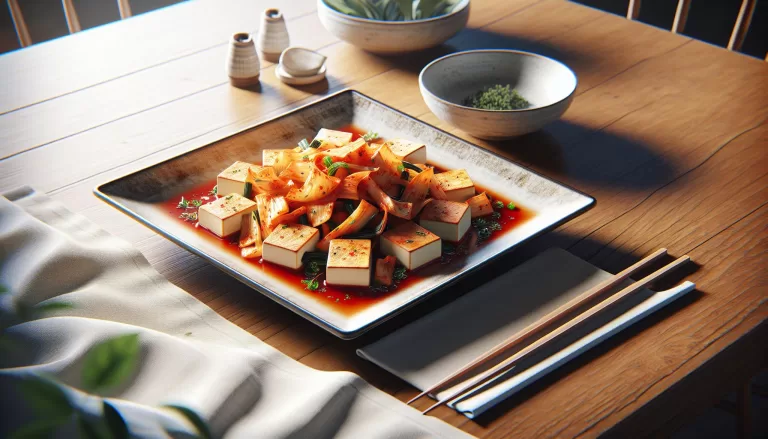Easy Homemade Galbijjim Korean Braised Beef Short Ribs Recipe and Serving Tips
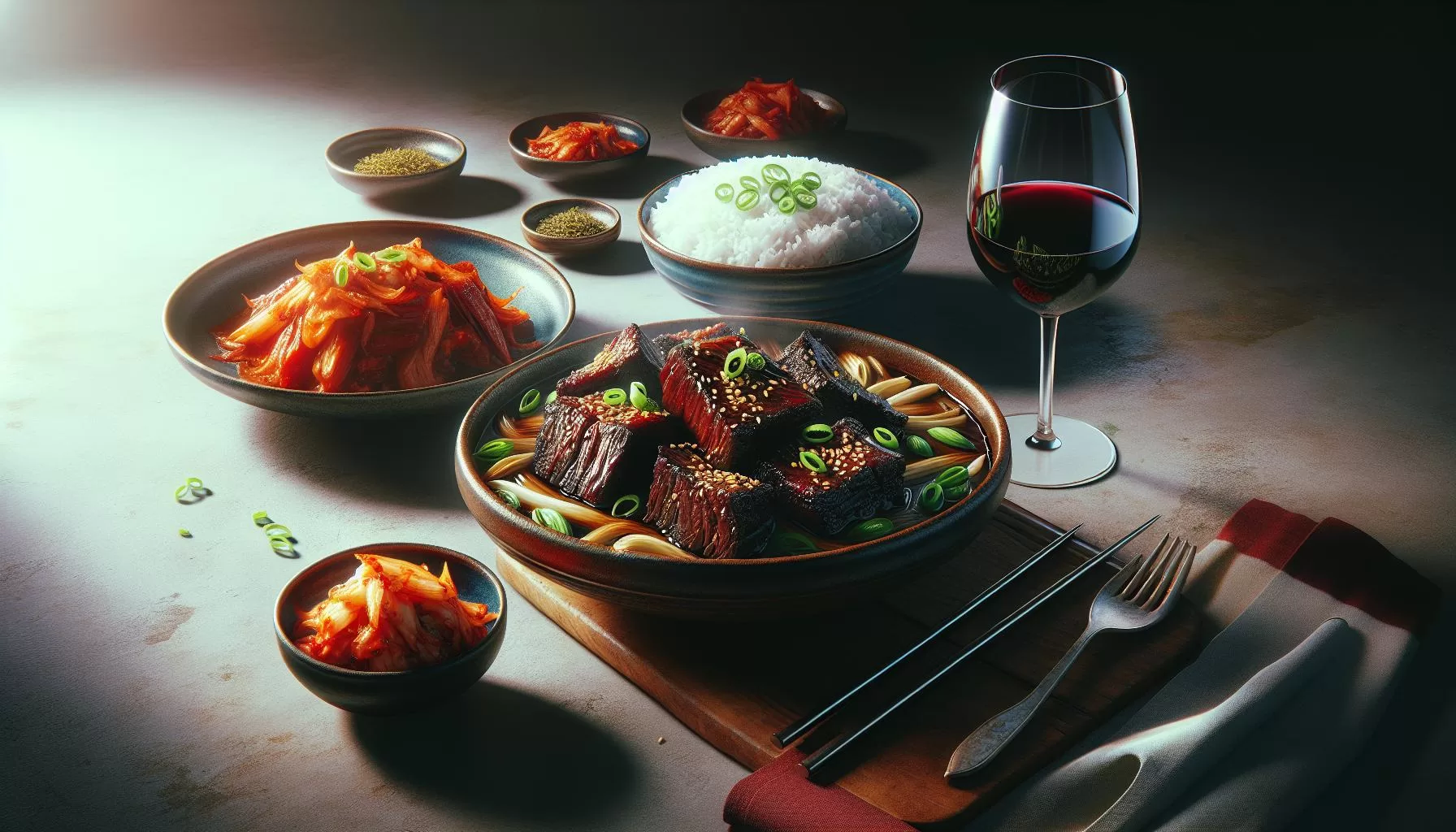
Overview of Galbijjim
Sliding up as a gem in the rich Korean cuisine, Galbijjim often steals the show at family gatherings and special occasions. This delectable dish, characterized by its depth of flavors and fork-tender meat, has a secret. The magic truly lies in its meticulous slow-cooking process.
When you sink your teeth into an expertly prepared serving of Galbijjim, you’re biting into a piece of culinary art that’s been simmered steadily and patiently. Savory beef short ribs find their perfect complement in the sweet and deeply flavored soy-based sauce. The ribs soak up every ounce of this rich concoction until they’re brimming with sublime tastes from within.
It’s fascinating to learn that the process of braising the beef actually helps to enhance its natural flavors. The heat from the cooking process breaks down the collagen in the beef, transforming it into a tender, melt-off-the-bone dish that you won’t easily forget.
When making Galbijjim at home, you’ll need some specific ingredients. These include beef short ribs, soy sauce, brown sugar, garlic, ginger, rice wine, and Asian pears. Additionally, this dish is often garnished with vegetables like carrots, radishes, and shiitake mushrooms “ging for a hearty meal.
If you’re looking to add a unique twist to this traditional dish, try incorporating gochujang or mirin. They’re not typical Galbijjim ingredients but offer an extra kick that makes your final dish memorable.
In terms of nutritional value, an average serving of homemade Galbijjim carries about 450 calories. It’s rich in protein from the beef, and balanced with carbs from the vegetables. Fat content is moderate, but it’s a hearty meal that will keep you satiated.
Here’s a breakdown of the nutritional information:
| Nutrition | Per Serving |
|---|---|
| Calories | 450 |
| Protein | 22g |
| Carbs | 10g |
| Fat | 25g |
With all this in mind, you are ready to impress your family and friends with a scrumptiously authentic Galbijjim. Just remember: it’s not just about cooking a dish, it’s about creating a delicious experience steeped in rich Korean tradition.
Ingredients for Homemade Galbijjim

So, you’re ready to make your homemade Galbijjim. Let’s dive right into what you need. To make this lip-smacking dish, gather these key ingredients:
- 2 pounds of beef short ribs
- 1/2 cup soy sauce
- 1/4 cup brown sugar
- 1 Asian pear, peeled and grated
- 4 cloves garlic, crushed
- 1 small onion, finely chopped
- 1 tbsp sesame oil
- 1 cup of water
- Salt to taste
Opting for beef short ribs ensures optimal flavor. If you can’t find any in your area, try other cuts of beef with a good balance of fat and meat such as chuck or brisket.
The beauty of Asian pear is its dual contribution to both taste and texture. Can’t find Asian pear? Regular pear or apple matched with a splash of lemon juice can replicate the distinctive flavor well.
For an extra punch, consider using gochujang, a Korean hot pepper paste, or mirin, a type of Japanese rice wine. Just a tbsp will add uniqueness to your Galbijjim.
Do you know how many calories are in your Galbijjim? We’ve broken down your meal’s nutritional value to help keep you informed.
| Nutrient | Quantity |
|---|---|
| Calories | 520 |
| Carbs | 22g |
| Protein | 41g |
| Fat | 28g |
Remember, healthy eating isn’t just about counting calories. It involves a balance of different nutrients to maintain optimal body function. We believe good food is not only about taste. Optimal nutrition value should always be a consideration when cooking at home.
Step-by-Step Cooking Instructions

Now that you’ve gathered all your ingredients, let’s dive straight into the cooking process for Homemade Galbijjim. Follow these detailed steps to create a delicious, memorable, and nutrient-rich dish that’ll leave your guests craving more.
Start by soaking your beef short ribs in cold water for about 1-2 hours. This step is essential as it helps remove excess blood and impurities. After soaking, drain thoroughly.
Next, we’re going to create an irresistible marinade. Grab your Asian pear, garlic, and onion, and blend them into a puree. This blend will give your Galbijjim its signature tang and aroma.
To this puree, add your soy sauce, brown sugar, sesame oil, and any optional additions. Tip: A dash of gochujang or mirin at this stage can make your dish stand out, enhancing its flavors.
Once your marinade is ready, bathe your beef ribs in it, ensuring each piece is evenly coated. Let it rest and soak up the flavors, ideally overnight. However, a minimum of 3 hours should do if you’re short on time.
Finally, it’s time to cook. Place your marinated beef and the remaining marinade in a pot over medium heat. Bring it to a simmer and let the ribs cook through till they’re tender. This usually takes about 2 to 3 hours.
To up the nutritional quotient, consider adding your favorite veggies during the last 30 minutes of cooking. This addition not only adds color to your dish but also packs it with essential vitamins.
Here’s the nutrition facts table for reference:
| Nutritional Info | Per Serving |
|---|---|
| Calories | 400 |
| Carbs | 10g |
| Protein | 20g |
| Fats | 30g |
Tips for Perfecting Your Galbijjim
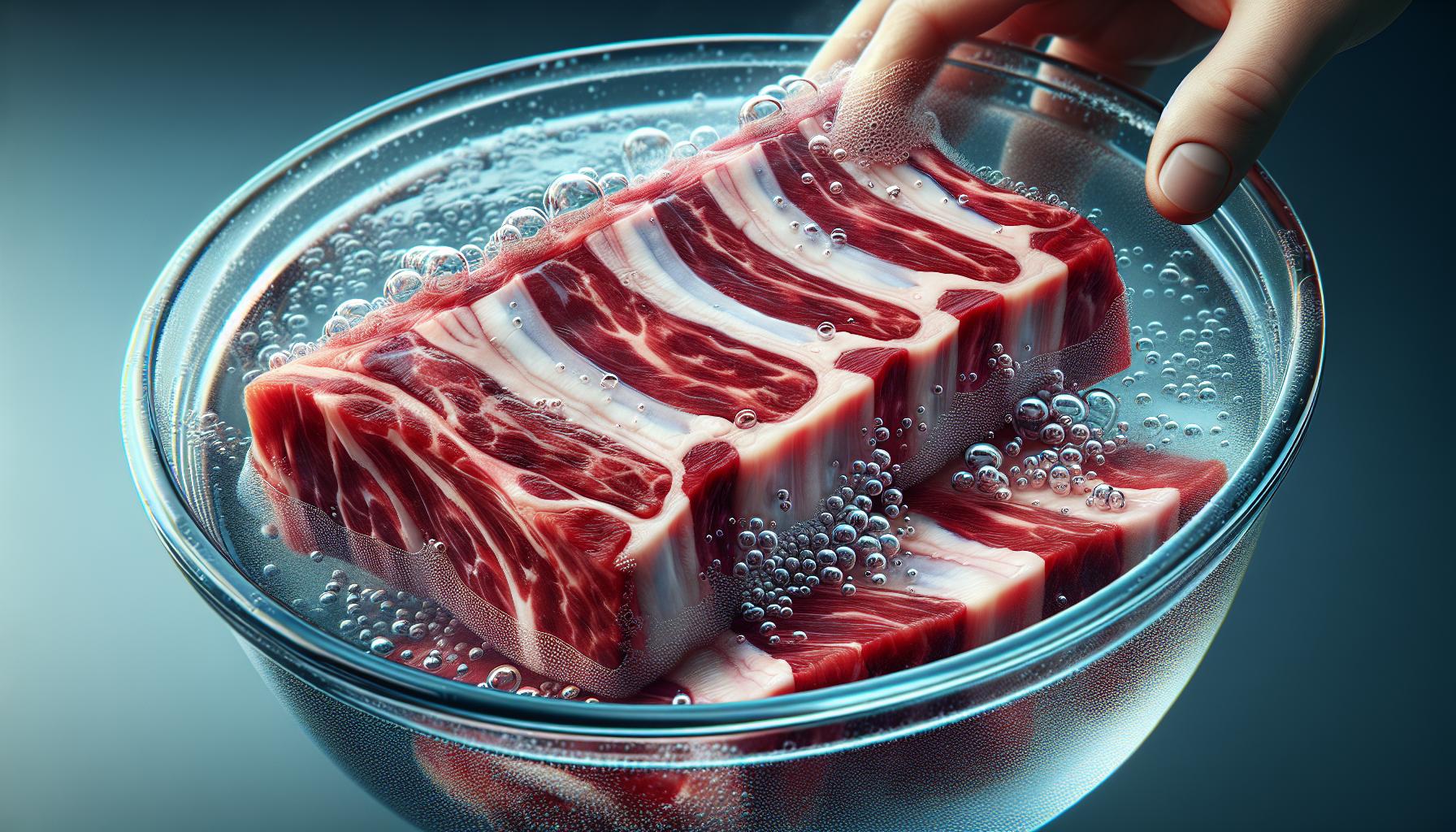
You’ve got the basics down. You know the process and the ingredients. Now let’s elevate your Galbijjim cooking skills to a whole new level. The following tips are a step-up from the standard, giving your dish that extra oomph.
Short ribs are the star ingredient for Galbijjim. Hence, it’s vital to pick the right cut. Look for meaty, thick cut short ribs with plenty of marbling. These qualities ensure that your beef is tender, juicy, and full of flavor.
Ever thought about soaking your ribs in cold water? This is a unique tip that many cooks don’t typically employ. But trust us, it can cast magic to your final dish. By soaking your ribs for 1 to 2 hours, you remove excess blood and impurities. This results in a clean, refined taste.
Confused about your marinade? Opt for fresh ingredients. Using a ripe Asian pear, not only adds a sweet base flavor, it also acts as a tenderizer. Freshly minced garlic, grated onion, and using good-quality soy sauce can also make a heap of difference to your marinadeo.
Slow-cooking is the key here, patience is your best pal. It might be tempting to crank up the heat, aim for a shorter cooking time. But resist that urge. Let your short ribs simmer in the marinade for 2-3 hours. This allows the flavors to meld together and the beef to become fork-tender.
Your cooking pan matters! The cast-iron casserole or Dutch oven is a smart choice. It heats evenly and maintains the temperature, ensuring that your ribs are cooked perfectly.
Now let’s talk about nutrition. Here’s a handy table on what to expect in terms of nutrition per serving:
| Calories | Carbs | Protein | Fats |
|---|---|---|---|
| 400 | 10g | 20g | 30g |
Serving Suggestions
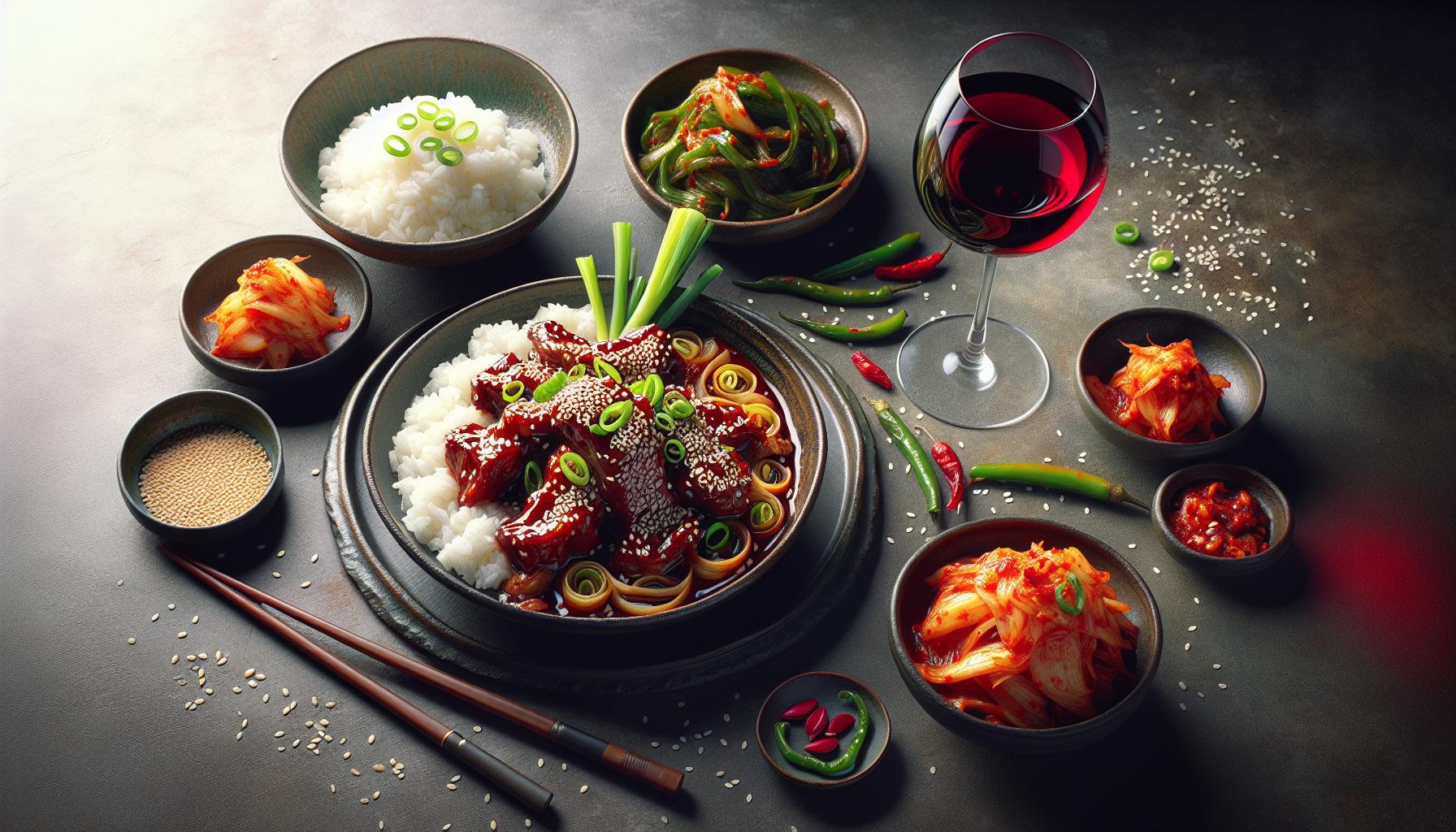
Presentation matters, especially when you’re impressing guests with your homemade Galbijjim. Even the best meal can be made better with the right pairing. The sesame seeds and green onions you garnished your dish with not only offer a pop of color but also intensify the flavor.
Looking for a perfect side dish? Try a bowl of warm, sticky white rice. It serves as a subtle, sweet counter to the rich, savory flavors of your Galbijjim. Moreover, it absorbs the sauce well allowing every bite to burst with flavor.
Need something refreshing alongside? Kimchi, a staple in Korean cuisine, offers a tangy, spicy crunch that complements the soft, tender short ribs. It’s also packed with probiotics leading to an interesting mix of savory, spicy, and healthy.
Beyond sides, let’s talk drinks. A robust red wine such as Merlot or Pinot Noir pairs well with the beef due to its bold flavors and smooth texture. If you’re looking for something non-alcoholic, traditional Korean barley tea or Boricha provides a nutty, toasty complement.
Feel free to play around and create your combinations. Remember, the best pairings are those that you enjoy the most.
Throughout the meal, pay attention as the flavors evolve. Notice how the short ribs become more tender with every bite, how the sauce becomes richer, how the grains of rice effortlessly blend in, and how the sides and drinks enhance every mouthful.
| Nutritional Value | Per Serving |
|---|---|
| Calories | 400 |
| Carbs | 10g |
| Protein | 20g |
| Fats | 30g |
Conclusion
You’ve journeyed through the art of creating homemade Galbijjim, a mouthwatering Korean braised beef short rib dish. You’ve discovered the significance of presentation and the impact of pairing garnishes like sesame seeds and green onions. You’ve learned the balance brought by warm white rice and the refreshing contrast offered by kimchi. You’ve delved into drink pairings, exploring options from red wine to traditional Korean barley tea. Now, it’s time to take this knowledge to your kitchen. Remember to savor each bite, noting the tenderness of the short ribs and the flavor symphony brought by your chosen sides and drinks. Most importantly, don’t be afraid to experiment and find your own perfect Galbijjim experience. Happy cooking!
